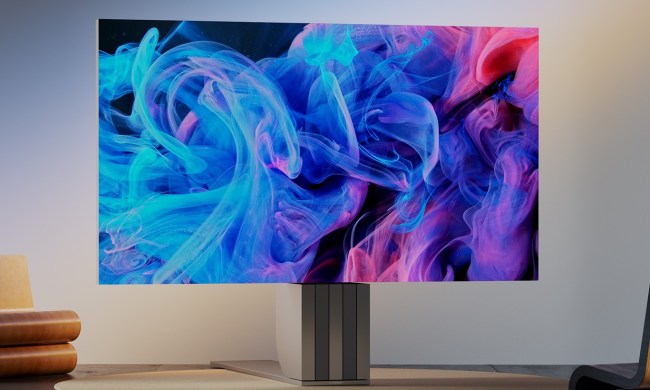Tucked behind a pair of velvet curtains in LG’s IFA 2018 booth is a small, unmarked room where the company is showing off some of its most impressive technology. LG hasn’t mentioned this in any of its press materials, and it isn’t actively routing showgoers into the room, but there sits the microLED TV in all its intensely bright glory — a silent and stealthy swipe at its competitor, Samsung.
At CES 2018, Samsung led its press conference with a 146-inch behemoth of a microLED TV, dubbed “The Wall” due to its wall-devouring size. Samsung was the first to show off a display of this size and target it toward consumers, suggesting it could be installed in high-end home theaters if and when it was made available at the consumer level. To date, The Wall has not shipped to any consumers, but the TV was made available for order in June and is supposed to ship sometime this year.
LG isn’t making any such commitment. In fact, it hasn’t said anything about microLED displays at all. At least not publicly. Rather it seems LG is brandishing its design and engineering muscle, almost as if to say anything Samsung can do, it can do too — maybe even better.
What is a microLED TV anyway?
MicroLED technology uses tiny LEDs as pixels for the display itself. This differs dramatically from today’s so-called “LED TVs,” which use LCD panels for displays and LEDs play a simple backlighting role. In TV circles, microLED displays are referred to as emissive — they makes their own light, just like OLED, and as such are capable of the perfect blacks associated with OLED TVs, while achieving brightness levels that far exceed OLED.

The challenge with creating a microLED TV is that, small as microLEDs are today, the technology hasn’t been scaled down to a size small enough to make what we would consider a normal TV. The microLED displays we have seen from Samsung — and now LG — are actually a grouping of several iPad-sized panels, stitched together to make one large display — kind of like an electronic quilt.
This approach is what leads to our primary criticism of Samsung and LG’s microLED TVs: If you get too close, you can see the individual panel borders, which makes the displays look less like TVs and more like commercial signage.
Of course, this technology is in its infancy, but we do expect Samsung, LG, and Sony to continue to pursue it. For Samsung’s part, a microLED TV could be part of a salvo to dethrone OLED TVs (which it refuses to manufacture), while LG would simply integrate a microLED TV as part of a broader TV dominance strategy.
As we sit back and watch the evolution of TV technology, from 8K resolution to multiple HDR formats, and now to microLED displays, it will be interesting to see in which basket manufacturers decide to place their technology development eggs.
Meanwhile, with an array of technologies and manufacturers vying with each other to build the best TV possible, there is one clear winner: you.




